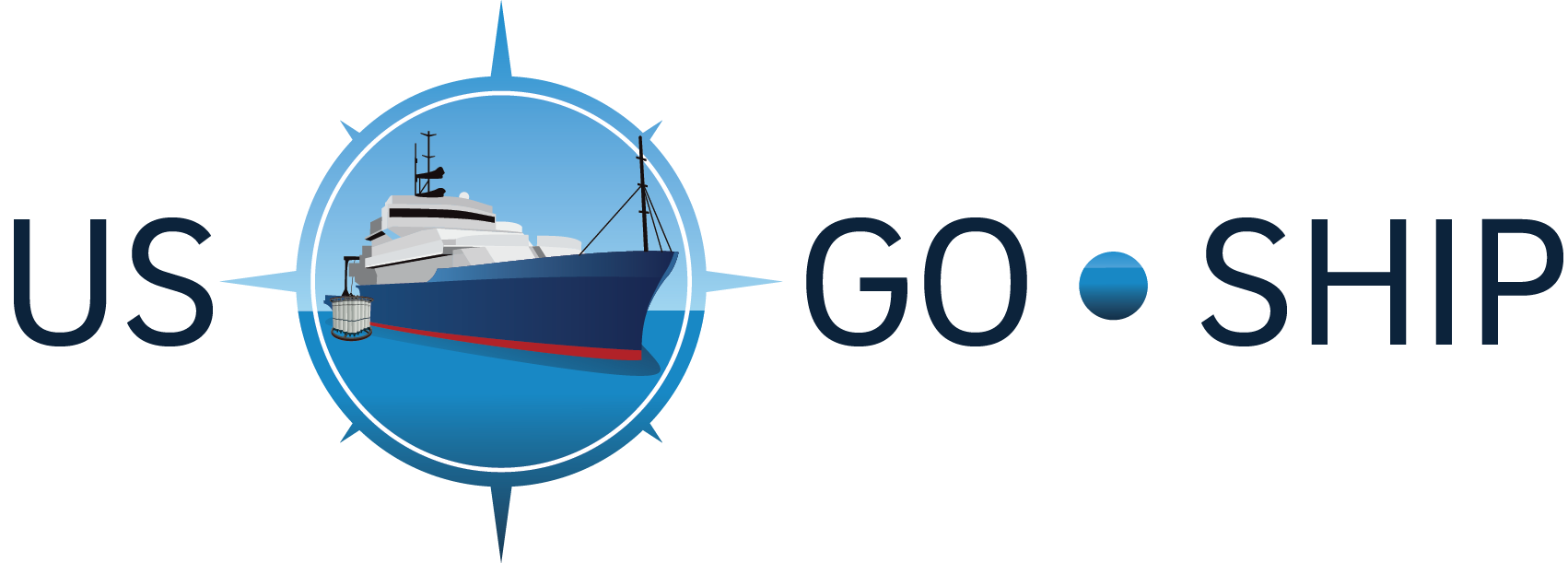Prepared by Brendan Carter
A map of our section, with the yellow arrow highlighting what we’ve done this week.
We’re on fire! (Figuratively, of course.)
We are at the tail end of a third week in a row of efficient southward progress with data from another 29 stations to show for our hard work. These were somewhat deeper (i.e. longer) stations with an average depth >4000 m crossing the Bauer and Roggeveen Basins. We owe our solid progress to continued laudable efforts from the scientists and crew, fair weather, and no small amount of luck. We are still on pace to have an efficient transit to Easter Island. If all goes to plan, next week’s update will have pictures of stoic stone Moai statues and leg 2 folks getting settled. That will be my last update, and Rolf Sonnerup will take over from there.
In addition to our normal duties, we are busy documenting the analyses and troubleshooting that went on during leg 1. While this information will ultimately be included in the P18 project report compiled at the end of leg 2, our goal is to gather as much of this information as possible now while all of the leg 1 participants are still on hand.
We are also excited and gratified to be receiving data from the scientists operating the floats we deployed several weeks ago. It sounds like those measurement programs are off to a good start.
Ocean ventilation on leg 1 vs. leg 2
P18 connects the oxygen deficient zones of the Eastern Tropical North Pacific with the formation region for Antarctic Intermediate Water (AAIW) and Subantarctic Mode Water (SAMW) in the Southeastern Pacific sector of the Southern Ocean. AAIW sits at the base of the thermoclines of the Southern Hemisphere and is noted for being unusually fresh (i.e. a salinity minimum). SAMW is found above AAIW in a portion of the ocean that is weakly stratified (i.e. low potential vorticity). Both water masses are noted for their comparatively high oxygen concentrations, and the two water masses have similar densities to the oxygen deficient waters of on the north end of P18. The juxtaposition of these high oxygen water masses to the south next to low oxygen water masses to the north makes for a dramatic transition at about the latitudes we are currently crossing. The two plots below, highlighting this transition, jumped out at us while we were comparing CTD data against the measurements from decades past.
Left: a section of O2 concentrations as measured during the 2007/2008 occupation about a decade ago. The low oxygen water masses to the north abruptly transition to higher oxygen water masses to the south near where we presently are (the blue arrow labeled “Ron Brown”). Right: this transition can be seen in our CTD data as well as intrusions of high-oxygen (brightly colored) fresh (low-salinity) waters in the most recent casts (notably the most recent two stations with lines on the left side of this plot).
Looking ahead
A map of wave heights along our section (from windytv.com). Notice the placid blues across leg 1 and the band of red across the southern end of the P18 line.
We have had a good set of weeks, but, as ever, we are anticipating challenges as we look ahead. Here are a few things on our radar:
-
- Whether leg 2 will have enough time to cross the Southern Ocean: these last three weeks have helped us to recover from the delays of the first week. However, it is difficult to predict how much time leg 2 will require crossing the Southern Ocean. The only surety in that region is that there will be bad weather at some point. The question is how bad it will be and for how long. The map above of wave heights might give a sense for why I am concerned.n This forecast has been similarly calm on the north end of P18 and restless on the south for at least the last month. It is impossible to safely deploy our equipment and collect seawater when winds and waves get strong enough.
- The aft winch: we’ve put an additional 80+ casts on the forward winch, and the wire on that winch has been used on previous projects as well. This leaves leg 2 with one winch in need of repairs and one with a wire that has been extensively used. We are hoping the repair efforts go well in Easter Island, and that the parts being flown in allow the aft winch to be used (thereby avoiding relying on the tugger in rough seas).
- Chilean clearance: We had been assured our research in the Chilean EEZ would be approved, but we didn’t get confirmation that we were good to go until very recently. We were understandably concerned given our experiences off Mexico. However, now we’re cleared to continue our leg 1 work into the EEZ, which we’ll enter late on Tuesday December 20th. Kudos again to our contacts in the State Department for helping us to push this issue forward.
Summary
It has been another great week. We’re beginning to wrap up leg 1 activities and working to lay the groundwork for leg 2. A lot of work remains between us and port, but the end is in sight, and just in time, we’ve run out of milk and we’re down to our last jelly beans.
Sampling at sunset: photo from DOM analyst Mari.
